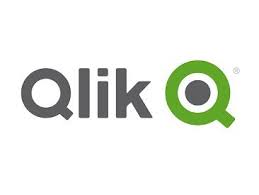Why Invest in Unified Communications as a Service Market Reach USD 118.8 Billion by 2031, Growing ..
Allied Market Research
published a new report, titled, " Why Invest in Unified
Communications as a Service Market Reach USD 118.8 Billion by 2031,
Growing with 16.3% CAGR." The report offers an extensive analysis of key
growth strategies, drivers, opportunities, key segment, Porter’s Five Forces
analysis, and competitive landscape. This study is a helpful source of
information for market players, investors, VPs, stakeholders, and new entrants
to gain thorough understanding of the industry and determine steps to be taken
to gain competitive advantage.
The
increase in demand for 5G high speed network, the surge in trend of bring your
own device (BYOD) and mobility, and the growth in migration from legacy systems
to cloud-based communication services drive the unified communications as a
service market. Rise in integration of advanced technologies in unified
communication as a service will present new growth opportunities for the global
market in the coming years.
The
global unified communications as a service market size was valued at USD 27
billion in 2021, and is projected to reach USD 118.8 billion by 2031, growing
at a CAGR of 16.3% from 2022 to 2031.
The
global unified communications as a service market are segmented into component,
delivery model, organization size, industry verticals, and region. Depending on
the component, the market is divided into telephony, unified messaging
conferencing, and collaboration platforms, & application. By delivery
model, it is divided into managed services and cloud services. Based on
organization size, it is categorized into large enterprises and small &
medium-sized enterprises. Based on industry verticals, it is bifurcated into
media and entertainment, BFSI, IT and telecom, healthcare, automotive &
transformation and others. Region-wise, it is analyzed across North America,
Europe, Asia-Pacific, and LAMEA.
Based
on component, the conferencing segment contributed to the largest share of
nearly one-third of the global unified communications as a service market in
2021 and is expected to maintain its dominance during the forecast period. This
is owing to the rise in remote working trend that led to an increased demand
for UCaaS conferencing solutions, as businesses seek to communicate and
collaborate effectively with their remote team solutions. The unified messaging
segment, however, is projected to witness the fastest CAGR of 17.9% from 2022
to 2031. This is owing to the increasing demand for remote work and
collaboration tools.
Based
on deployment model, the hosted/cloud service segment grabbed the highest share
of three-fifths of the unified communications as a service market in 2021 and
is expected to dominate the market in 2031. This is because companies are
looking for ways to improve collaboration and productivity among their
employees. The managed service segment, however, would witness the fastest CAGR
of 17.3% from 2022 to 2031. This is owing to the rise in cyber threats which
has led to an increased demand for managed security services, including threat
detection and response, data protection, and compliance management.
Based
on region, the market in North America was the largest in 2021, accounting for
more than one-third of the global unified communications as a service market
and is likely to maintain its dominance during the forecast timeframe. This is
owing to the increase in demand for connected interfaces, growth associated
with cloud technology, and penetration of bring your own devices (BYOD) in the
U.S. However, the market in Asia-Pacific is likely to show the fastest CAGR of
18.6% during the forecast period. This is owing to the rapidly digitized
straining cloud networks and data centers in the region, where the adoption of
edge computing is helping to reduce latency, enhance security, and maximize
reliability.
Key
players profiled in the report include Avaya, Inc., BroadSoft, Inc, BxB, Inc,
Cisco Systems, Inc., Genesys, Microsoft Corporation, Mitel Networks Corp., NEC
Corporation, RingCentral, Inc., Zoom Video Communications, Inc. Market players
have adopted various strategies, such as product launches, collaboration &
partnership, joint ventures, and acquisition to expand their foothold in the
unified communications as a service industry.
Covid-19 Scenario-
●
During the outbreak of the Covid-19 pandemic, the unified communications as a
service market expanded due to the rising adoption of technologies, such as
machine learning and artificial intelligence. This is because AI capabilities
enable faster and more accurate manual task completions.
●Moreover,
the emergence of 5G technology during the pandemic period enabled high-speed
internet that boosted the market growth. This is because video and
audio-conferencing require high speed and low latency in the connection, which
is easily provided by the 5G network.
●Players
in the market also enhanced their communication tools to provide better
services to employees. For instance, in May 2020, Zoom Video Communication Inc.
for unified communications-enabled organizations to add up to 52 weekly
minutes' worth of productivity per employee, reduce IT troubleshooting time by
75%, and decommission redundant technologies valued at up to tens of millions
of dollars annually.


































Leave A Comment